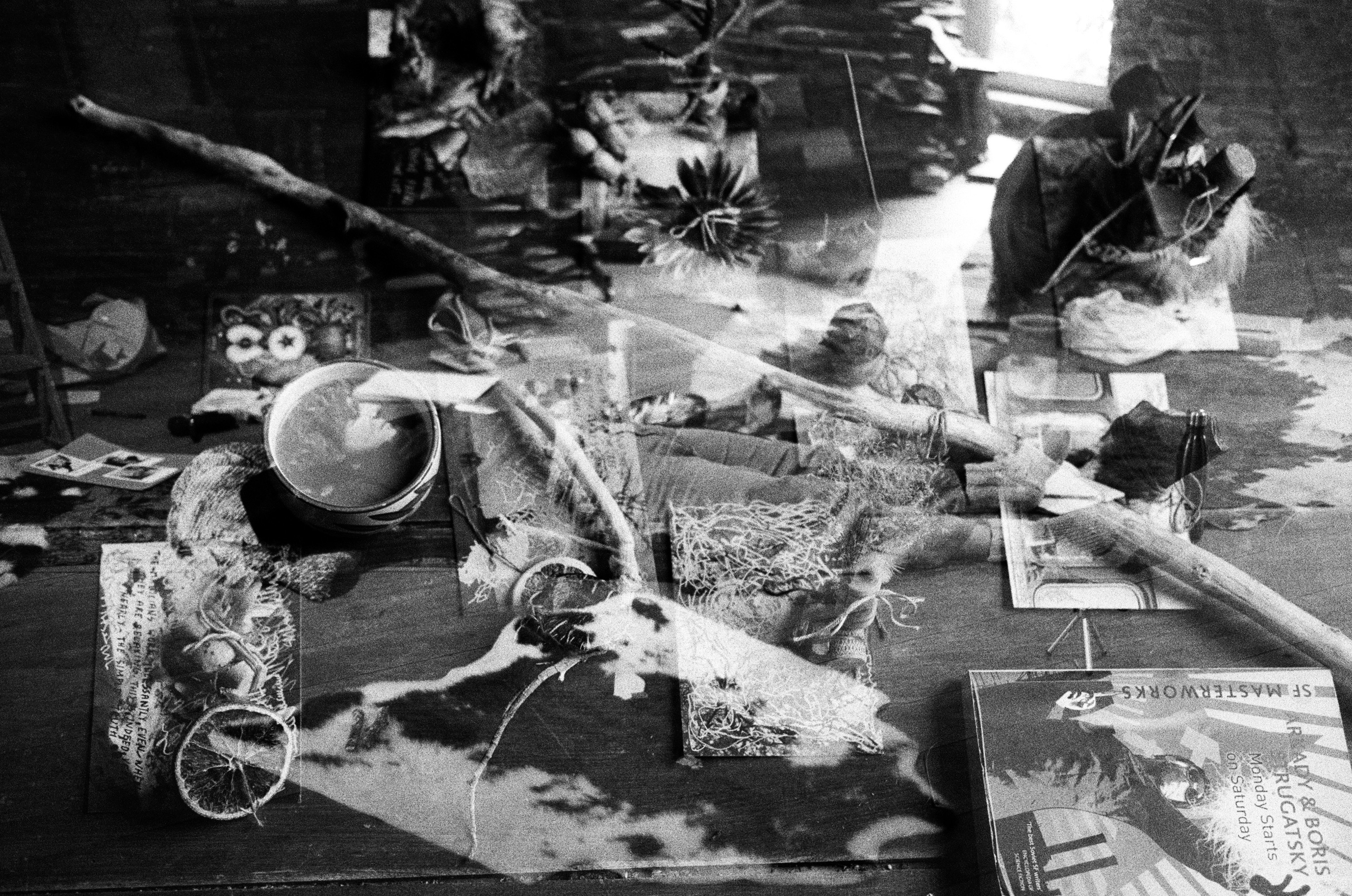This is an old revision of the document!
Shrines House Spirit
This page is a trace of the research and creation by Rasa Alksnyte with close involvement from Pieter De Wel and her beloved dog Billy about characters and personalities of House Spirits, their summoning and Shrines to care and worship them. This ongoing trajectory is supported by wp Zimmer, FoAM Zenne leading towards the final result to be presented at the Zwalm 2021 festival curated by Croxhapox
The magicians work incessantly, even when they are relaxing. This is indeed very nearly the simple truth. Brothers Strugatsky
Shrines are places or containers of spiritual presence. One of the main features of spirituality is that its objects do not “exist” in the ordinary sense of the word. Deity, spirit, soul, ghost and other familiar categories of believes lie outside the realms of everyday objects in time and space. However, human beings across multiple cultures experience the presence of these creatures in relation to material objects. Much of the purpose of shrines is to provide habitat for sacred presences within the everyday life. Shrines may be seen as sites of spiritual realities, places where meanings take on specific, tangible, and tactile presence. The English word shrine is derived from the Latin scrinium, meaning a box or receptacle. The shrine is the receptacle within the material world for the spiritual association that believers experience when they come into the presence of these receptacles. Many shrines are unambiguously religious, linking events, persons, and places central to religious traditions. Other shrines much more open-ended, not tied to particular religious traditions but possibly linked to a certain regional or national identity.
Spirituality is not necessarily linked to a specific religion. Ancient tribes and “primitives” had their own believes that helped to explain their surroundings and make sense of being. Godly beings, spirits, deities and other creatures had place in their lives and accompanied them in joys and sorrows. Some of these believes grew into or got picked up by larger religions, others stayed on the level of tales and myths. In any case these stories thought respect to everyone and everything around and acknowledged deeper powers of belonging in this world and beyond.
Now, when more and more people don’t find their ways to the churches because of rigid old-fashioned doctrines or disputable history’s, many still seek the spiritual fulfilment elsewhere. It happens by joining various therapeutic sessions such as mindfulness, yoga, ritualistic retreats or by attending events in theaters and museums that engage and talk about the humanity and purpose in life. This trend only shows the importance of having time and places to express and experience something else than just daily activities. Such spirituality is vital to us as community and individuals.
Different religions accentuate that you don’t get to paradise without suffering. Or, you have to behave according to certain rules and forget about yourself, to be rewarded later. But when is that later? This doctrine is deeply imbedded in our lives as if it is carved in our bones. We are so preoccupied with all those amazing things that will happen after… you’ll graduate, you’ll build the house or earn lots of money, you’ll get kids or kids will leave the house or … you die?…We wait for the weekend to do fun stuff, we book expensive holidays with expectation to be happy then. We plan and plan and plan and live in the state of constant expectation that those short moments of relief will make us happy and reward us for all tiredness, misery, hardness we experience now. Just like now we are waiting for covid restrictions to be lifted with an idea that then we will live again. But what about Now? Can we be happy now even if the times or circumstances are not perfect?
Why Shrine? There is something attractively collective and democratic about public shrines. There is no one author of it. Only the initial form and invitation for action can be created by one person. What happens after is beyond control. Informal participation of passersby creates everchanging visual aesthetics and energetical charge. Respect for what is already there and negotiation where your contribution finds its place creates dialog. The constant accumulation of various objects adds strength and intensity to the experience. You are not alone yet your thought and action are as important as any other, represented in the shrine.
A Shrine for Now (working title) Since very short I am a volunteer at a retirement home for people with dementia. There is a closed ward for patients with most advanced stage of this illness. Spending time there is touching, emotional and confronting. Will my parents end up like that? My friends? Myself? Being among these people is also very interesting and inspiring. As if humanity gets peeled off to its core. Only very basic mechanical actions are possible, only very basic true emotions. Some patients light up by hearing their name or a sentence in their mother tongue, others burst in tears from recognising their favourite melody or a face in the picture on the wall. All of them live in that one exact moment, the moment when the mind is still capable to make sense of what’s around them. Moment of epiphany. And then they sink back into the unknown. In this ward there is very little of yesterday and there is no tomorrow. If you can enjoy beauty, warmth, touch and happiness you have to enjoy it now. Because Now it’s all there is.
With my work Shrine for Now I would like to create an awareness of magic, beauty, weirdness, humor, happiness… that is all around us here and now. And, by doing that put sites, places, visual marks and living characters seen and found in and around Zwalm in focus. I’d like to bring to attention the small, at first glance common and insignificant “treasures” that are filled with preciousness, beauty or weirdness. Because each step we take we can see something special or something that deserves our appreciation. I would like to invite to take a moment and think of Now. What is there around you? Do the traces, stories, images and symbolic representations of my encounters with Zwalm inspire or question your state of being? Is there something that bothers you or makes you smile? What thoughts deserves your time and attention? Is there something you want to tell your partner, friend, child, parent but are waiting for the right moment? Perhaps that time is Now? As for Now is the best time there is.
How to Shrine? A large, old, wooden wardrobe is installed in a young forest behind the villa “Vrede”. It serves as the casing for the shrine. The inside panels of the wardrobe are created by stone printing the graveyards, brick walls and other surfaces in the surroundings of Zwalm. The words and patterns from the stones are applied on a big canvas and placed inside of the wardrobe to create a clear environment for the shrine to be. From the random conversations with local people important keywords about their experience of happiness, joy, fun and good times are written (or printed) on the tracing paper and layered on top of the canvas. Pictures, donated magazine or newspaper snippets fill the empty gaps to create visual accents of the total image. Discarded broken objects gets collected and transformed into a number of small figurines as a symbolic representation of different characters and experiences. These hangs or are placed in the wardrobe accumulating volume and forming a sense of mystery. There are QR codes displayed among the images and objects linking to the pictures and the stories of the exact locations in Zwalm. In the drawers of the cupboard more of the broken/found objects and material is stored. During the festival people are invited to create their own little figurines, write down own words or make other kind of contribution to be placed into the Shrine for Now. This way the shrine will grow and carry all those important emotions to be shared with everyone.
Different aspects of shrines:
-Presence of body parts in a shrine as an association with the physical remains of spiritual creature. As an example: The bones and teeth of the body of the Buddha that remained after his cremation have become objects of great veneration because they enable the devotee to link the meaning of the Buddha's message with the trace of his physical presence in the world. Also, it is understood to be magnets for transformative power from which you may charge up for various life-enhancing purposes such as health, wealth, and success in the ordinary world.
-Shrines at intersection of nature and culture.
Many shrines are located at the important natural sites such as confluence of two rivers, rocks in the middle of flat landscape, unusually shaped mountains… But also, objects (de)formed by coincidental natural events. Such as trees that been stroke by lightning or large stones penetrated by forces of nature often serves a base to install a shrine and dictates its form and aesthetics.
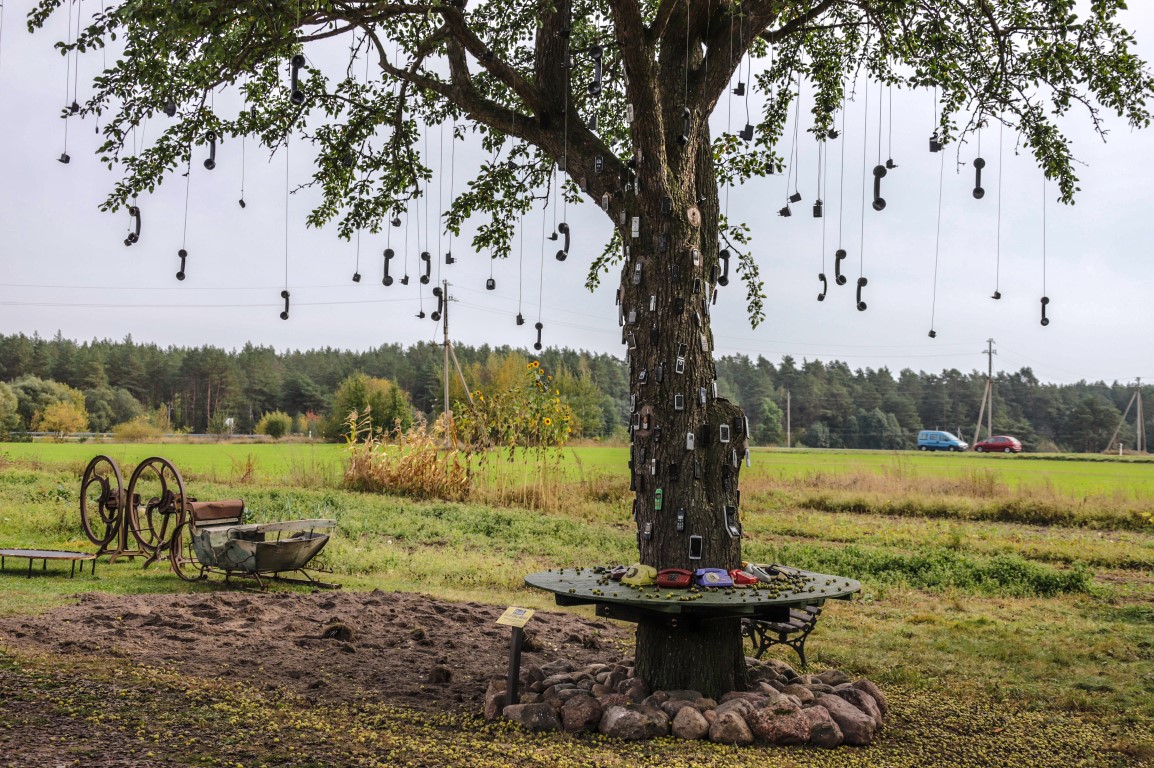
- Shrines as a trajectory for movement.
An important function shrines serve is to provide points of destination to groups of pilgrims or individual wanderers. The shrine may be located at the end of the road, or a network of shrines may serve as attention points along the way. Most often the journey of the pilgrims is more important than the shrine itself. Yet without the destination point the journey would be meaningless.
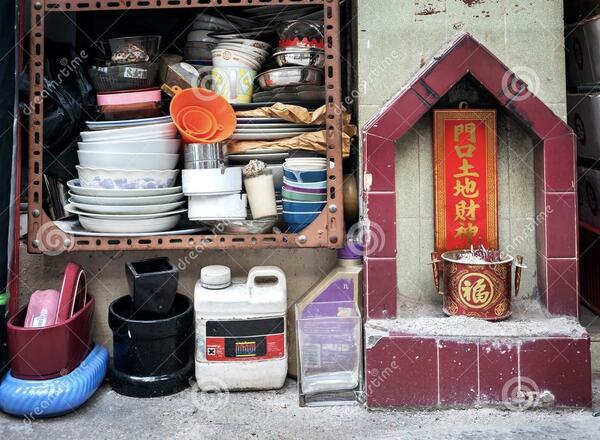
-Street shrines as artefacts of visual culture. Street shrine constructions (often present in Asia) as a challenge of the organization of space: a sacred space (the shrine) that invites individuals to stop, pray and get in touch with deepest inner thoughts provokes this public space (the street) that asks for neutral and general behavior. A shrine directs attention to the semiotic operations of the image, focusing on effects of attraction and repulsion.
House spirit (based on mythological creatures Kaukas, Domovoi, Laume and Aitvaras)
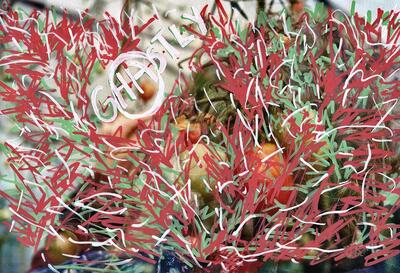 A house spirit is an ethereal creature who lives in people’s houses and if well cared for it is known to bring luck, good fortune and prosperity. Some spirits are resident in a house even before people move in. However, most of the time new owners have to summon house spirit themselves. On the occasion it is possible to purchase one on the market or order spirit eggs online. Though, even efficient, this way does not guaranty a smooth assimilation of the house spirit and might not be so successful in terms of good fortune and happiness.
A house spirit is an ethereal creature who lives in people’s houses and if well cared for it is known to bring luck, good fortune and prosperity. Some spirits are resident in a house even before people move in. However, most of the time new owners have to summon house spirit themselves. On the occasion it is possible to purchase one on the market or order spirit eggs online. Though, even efficient, this way does not guaranty a smooth assimilation of the house spirit and might not be so successful in terms of good fortune and happiness.
 How to summon the house spirit?
#1
The easiest way to summon the house spirit is as follows:
Take a small box or any kind of container with a lid and a sharpest knife you have to the roundest tree you can find in the neighbourhood.
Take off your shoes, walk around the tree several times until you find the spot you feel most comfortable. Place your open box in front of you on the ground. Stand there for a bit facing east and holding your knife in the left hand.
When ready, cut the earth between your toes, leaving the knife next to the pinkie of your right foot.
Lift your both hands in the air and wait until the spirit enters the box. (Please be aware that house spirits are mostly invisible creatures, but they always give a sign when they are present: moves leaves rapidly, drops a tiny branch or seed, spreads peculiar smells, makes odd sounds…) When you’re sure the spirit has arrived, close the container and take it home.
When home place the container on your doorstep (make sure the doors remains open), open the lid, play or sing a happy tune.
Congratulations! Now you have your own house spirit.
Important notice, the house spirit is only capable to perform its goodness if the owner of the house is kind to him and the other creatures entering or leaving the house.
#2
You may acquire a house spirit by hatching one from the testicles of a seven-year-old boar. It is not so easy indeed. Therefore, you can try to attract one to live in the house by being extremely patient and kind.
Traditionally, a woman of the household, usually the wife, needs to craft a loose garment from a single piece of thread and bury it in a corner of the home in hopes of luring a house spirit. If successfully executed this also invites the spirit to take up the residence as its own; though it would certainly nest in a darker area of the house, such as the cellar. Therefore, you need to insure you have a dark yet cosy corner foreseen for it.
#3
For a week sleep with nothing but cheap perfume.
The sixth day put on a black suit, preferably woolen and wear sandals.
Go to your local supermarket, buy 5 bundles of leek,
walk home.
When home, with the leek make a gate at your front door.
Only then arrange for a mackerel to be delivered to your door at 23 hrs. When the delivery arrives
go to the door open your leek gate
and yell:
“my darling my darling
you have come home”
the spirit will come to you ….
#4
In a hot bath
burn some artemisia, fumigate the room,
you are alone.
Slide down in bath holding a meat cleaver.
It's business end just touching your pubic hair.
If by accident you shave of a few, that's perfect.
Breathe
Sing,
“Christine the strawberry girl
Christine the strawberry girl”…
If you can burn some more artemisia, good
If you can fake heart failure that's just perfect
Embrace the cleaver
The spirit will visit you.
Shrines for a house spirit
How to summon the house spirit?
#1
The easiest way to summon the house spirit is as follows:
Take a small box or any kind of container with a lid and a sharpest knife you have to the roundest tree you can find in the neighbourhood.
Take off your shoes, walk around the tree several times until you find the spot you feel most comfortable. Place your open box in front of you on the ground. Stand there for a bit facing east and holding your knife in the left hand.
When ready, cut the earth between your toes, leaving the knife next to the pinkie of your right foot.
Lift your both hands in the air and wait until the spirit enters the box. (Please be aware that house spirits are mostly invisible creatures, but they always give a sign when they are present: moves leaves rapidly, drops a tiny branch or seed, spreads peculiar smells, makes odd sounds…) When you’re sure the spirit has arrived, close the container and take it home.
When home place the container on your doorstep (make sure the doors remains open), open the lid, play or sing a happy tune.
Congratulations! Now you have your own house spirit.
Important notice, the house spirit is only capable to perform its goodness if the owner of the house is kind to him and the other creatures entering or leaving the house.
#2
You may acquire a house spirit by hatching one from the testicles of a seven-year-old boar. It is not so easy indeed. Therefore, you can try to attract one to live in the house by being extremely patient and kind.
Traditionally, a woman of the household, usually the wife, needs to craft a loose garment from a single piece of thread and bury it in a corner of the home in hopes of luring a house spirit. If successfully executed this also invites the spirit to take up the residence as its own; though it would certainly nest in a darker area of the house, such as the cellar. Therefore, you need to insure you have a dark yet cosy corner foreseen for it.
#3
For a week sleep with nothing but cheap perfume.
The sixth day put on a black suit, preferably woolen and wear sandals.
Go to your local supermarket, buy 5 bundles of leek,
walk home.
When home, with the leek make a gate at your front door.
Only then arrange for a mackerel to be delivered to your door at 23 hrs. When the delivery arrives
go to the door open your leek gate
and yell:
“my darling my darling
you have come home”
the spirit will come to you ….
#4
In a hot bath
burn some artemisia, fumigate the room,
you are alone.
Slide down in bath holding a meat cleaver.
It's business end just touching your pubic hair.
If by accident you shave of a few, that's perfect.
Breathe
Sing,
“Christine the strawberry girl
Christine the strawberry girl”…
If you can burn some more artemisia, good
If you can fake heart failure that's just perfect
Embrace the cleaver
The spirit will visit you.
Shrines for a house spirit
 Purpose of shrines
-Summoning and evocating of spirits:
How to summon spirit? How to attract good fortune?
-Caring, maintaining, protecting good fortune:
Offerings, contributions, gifts. Reoccurring rituals. Close communication between the spirit and the owner of the house.
-Letting go, cleansing, separating from negative influence:
Exorcism, transitions, end celebrations…
Purpose of shrines
-Summoning and evocating of spirits:
How to summon spirit? How to attract good fortune?
-Caring, maintaining, protecting good fortune:
Offerings, contributions, gifts. Reoccurring rituals. Close communication between the spirit and the owner of the house.
-Letting go, cleansing, separating from negative influence:
Exorcism, transitions, end celebrations…
 Elements for the shrines and its meaning
• a dry lump of earth, compost, clay as a connection to the roots and organic matter
• glass, transparent plastic, sugar, agar-agar, shiny shells as a representation of water and flow
• moss as a representation of a deep dark forest and location with many mushrooms
• masks, imitation of scary face as a warning for trespassing into the spiritual world
• a cluster of mushrooms as a hint to multiplicity and multi-layered being
• skull, cranium, teeth, bones as a trace of physical presence of a spirit in a real world
• phallus impudicus, a species of fungus as a metaphor for reproduction, rebirth and new beginnings
• knoll, round stone representing a top of a hill as a search for divine
• small shiny or colourful objects as a reminder of a playful, childlike character of the spirit
• branches and twigs as a safe place for shadows and to hide behind
• tread, pieces from textiles, wool as invitation for cosiness, softness and kindness
• seeds, grain, berries as a reminder for generosity and invitation for multispecies co-habitation
Elements for the shrines and its meaning
• a dry lump of earth, compost, clay as a connection to the roots and organic matter
• glass, transparent plastic, sugar, agar-agar, shiny shells as a representation of water and flow
• moss as a representation of a deep dark forest and location with many mushrooms
• masks, imitation of scary face as a warning for trespassing into the spiritual world
• a cluster of mushrooms as a hint to multiplicity and multi-layered being
• skull, cranium, teeth, bones as a trace of physical presence of a spirit in a real world
• phallus impudicus, a species of fungus as a metaphor for reproduction, rebirth and new beginnings
• knoll, round stone representing a top of a hill as a search for divine
• small shiny or colourful objects as a reminder of a playful, childlike character of the spirit
• branches and twigs as a safe place for shadows and to hide behind
• tread, pieces from textiles, wool as invitation for cosiness, softness and kindness
• seeds, grain, berries as a reminder for generosity and invitation for multispecies co-habitation
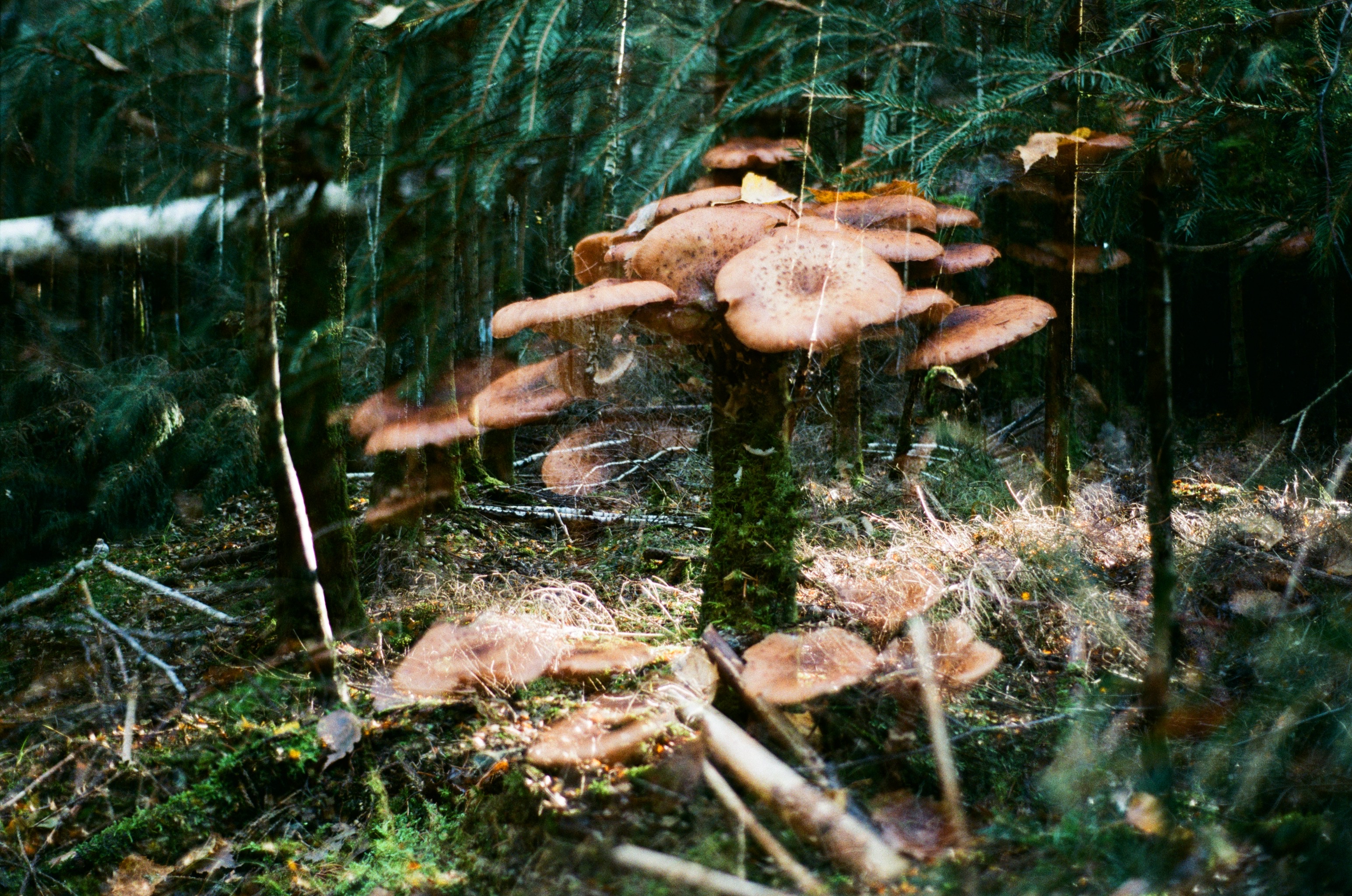 Characters of the House Spirits and their care takers
Aldona Parnassus CIO of the International Presidium of Spirits and Shrines (IPSS)
Long before dung beetles roamed the back streets of Pabybé a young woman was crowned First Singer of Electronic Underground Music Songs right there and then in Coroi Ville. That woman was Aldona Parnassus, she received this accolade for her performance of “I got you Babe” during the Festival of Waves. Aldona was then already a confidant of Spirits all over, which allowed her to sing in voices no one ever heard.
Madame Parnassus started to mix her underground singing with shrining. Building them, researching, or maintaining shrines for all kinds of spirits. Her relationship with the anima’s began to bloom into a cooperative entity which allowed her to switch between this and other worlds easily. In these other universes she would be trained in states of existence that can only be explained as twirls.
Needless to say, Aldona Parnassus is part of a galaxy which is ever so mind blowing we cannot start to describe it.
Later on, in her career all things Haunted became ever more the center of her being culminating in being appointed as the CIO of the International Presidium of Spirits and Shrines (IPSS)
She migrates now through our universe eternally busy with upholstering, ionizing or whatever actions she deems necessary to facilitate the world of spirits and shrines.
An untold story tells us that she once built a shrine for a spirit before that spirit had even started its career. Then she decorated the shrine with that spirit’s dying breath which she bottled in a Chanel 5 flask.
Parnassus is known to have cheated spirits into leaving the keys to their back doors.
She has built shrines that drove humans to tears with their beauty and veracity.
There might be only one way to describe the work and world of Aldona Parnassus.
If it is haunted, in every sense of that term, she has been there and sniffed it.
Characters of the House Spirits and their care takers
Aldona Parnassus CIO of the International Presidium of Spirits and Shrines (IPSS)
Long before dung beetles roamed the back streets of Pabybé a young woman was crowned First Singer of Electronic Underground Music Songs right there and then in Coroi Ville. That woman was Aldona Parnassus, she received this accolade for her performance of “I got you Babe” during the Festival of Waves. Aldona was then already a confidant of Spirits all over, which allowed her to sing in voices no one ever heard.
Madame Parnassus started to mix her underground singing with shrining. Building them, researching, or maintaining shrines for all kinds of spirits. Her relationship with the anima’s began to bloom into a cooperative entity which allowed her to switch between this and other worlds easily. In these other universes she would be trained in states of existence that can only be explained as twirls.
Needless to say, Aldona Parnassus is part of a galaxy which is ever so mind blowing we cannot start to describe it.
Later on, in her career all things Haunted became ever more the center of her being culminating in being appointed as the CIO of the International Presidium of Spirits and Shrines (IPSS)
She migrates now through our universe eternally busy with upholstering, ionizing or whatever actions she deems necessary to facilitate the world of spirits and shrines.
An untold story tells us that she once built a shrine for a spirit before that spirit had even started its career. Then she decorated the shrine with that spirit’s dying breath which she bottled in a Chanel 5 flask.
Parnassus is known to have cheated spirits into leaving the keys to their back doors.
She has built shrines that drove humans to tears with their beauty and veracity.
There might be only one way to describe the work and world of Aldona Parnassus.
If it is haunted, in every sense of that term, she has been there and sniffed it.
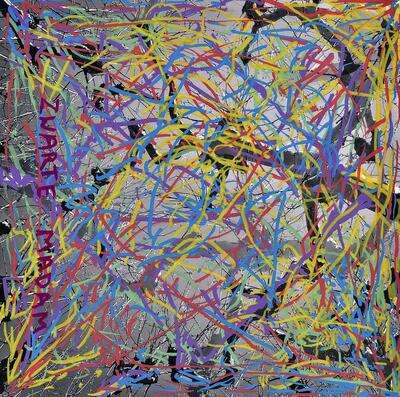 The shrine for Kraka Snakkur
Only a few moments a year Kraka Snakkur will manifest himself in this paddock.
When he shows up in this meadow it is mostly to entertain the cows, basically these poor things are complacent and hilariously slow. He will play practical jokes on them and try to trick them into extasy. Kraka Snakkur is a very blessed singer, especially of disco music! Bones Bones Bones!!!
This shrine praises his cunning and perseverance all through highlighting his best jokes, he is a crack snake impersonator.
If you are here when he is around, he will certainly enjoy singing Lionel Ritchie's Hello with you.
Showing your devotion to him is easy, place a white stone on the shrine. He will be overjoyed.
Hail Kraka Snakkur!!!
The shrine for Kraka Snakkur
Only a few moments a year Kraka Snakkur will manifest himself in this paddock.
When he shows up in this meadow it is mostly to entertain the cows, basically these poor things are complacent and hilariously slow. He will play practical jokes on them and try to trick them into extasy. Kraka Snakkur is a very blessed singer, especially of disco music! Bones Bones Bones!!!
This shrine praises his cunning and perseverance all through highlighting his best jokes, he is a crack snake impersonator.
If you are here when he is around, he will certainly enjoy singing Lionel Ritchie's Hello with you.
Showing your devotion to him is easy, place a white stone on the shrine. He will be overjoyed.
Hail Kraka Snakkur!!!

